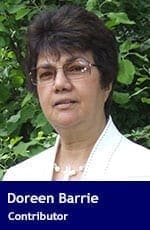 It’s déjà vu all over again. Equalization payments are under attack by Alberta’s Wildrose Party.
It’s déjà vu all over again. Equalization payments are under attack by Alberta’s Wildrose Party.
It’s an easy target because while the intent of the program is clear, the process for calculating payments is not.
Equalization payments are made out of federal tax revenue, not provincial revenue, collected across Canada.
However, over the years, provincial politicians have used the program as a political football. A few examples:
- In 2006, Alberta Premier Ralph Klein threatened to walk away from the equalization program because Alberta’s natural resource wealth was included in the formula. Prime Minister Stephen Harper pointed out that it was neither an Alberta program nor an Ontario program, so none of the provinces could dictate how the money is collected or distributed.
- Newfoundland Premier Danny Williams battled over equalization with two prime ministers, Paul Martin and Harper. In 2004, he lowered the Canadian flag on provincial buildings because Ottawa wanted to claw back revenue from equalization payments.
- Angry with Harper for much the same reason, Williams later launched a successful “anything but Conservative” campaign during the 2008 federal election. Never mind that offshore resources were deemed to belong to the federal government.
- Nouveau riche Saskatchewan, which was on the receiving end of equalization almost continuously until 2008, now wants to dictate how the have-nots should spend their money.
The latest assault on equalization comes from the Wildrose at a time when Alberta is in the worst possible financial shape. Employing provocative and misleading language, MLA Derek Fildebrandt has railed against people like Montreal Mayor Denis Coderre for expressing concerns about the Energy East pipeline. Fildebrandt demanded that Quebec return the billions of dollars it has received in equalization “paid for in large part by Alberta taxpayers.” The truth is that the bulk of funding for equalization comes from taxpayers in Ontario (40 percent) and Quebec (20 percent). Revenue from Alberta is approximately 15 percent of the total. Alberta’s share of funds going to Quebec is 1.1 percent of the total received by that province.
The rationale for equalization payments is to reduce fiscal disparities so less affluent provinces can provide a basic level of services to citizens without ruinous taxation. These are unconditional grants that each province spends as it sees fit. The entitlements are formula-based and calculated at five-year intervals, the next one due in 2019.
Determining whether a province receives equalization is based on its fiscal capacity, i.e. the amount it can raise from the various tax bases available to it. The basket of taxes and the method for establishing have and have-not provinces has been adjusted periodically. The calculations are complicated, which makes it easy to criticize and misrepresent.
Equalization payments are mistakenly faulted for not responding quickly to rapid changes in a province’s fiscal capacity. However, this isn’t what the program was meant to do – it was designed to address structural problems resulting from wide disparities among provinces. It was never intended to solve urgent problems such as the plummeting economy in Alberta.
Although it is grounded in core Canadian values and has solid support across the country, the program is not perfect. While supporting equalization in principle, Canadians should have confidence that it is being managed appropriately and impartially.
Despite some provincial input, changes are made unilaterally by the federal government, sometimes for short-term political reasons. To ensure that equalization is de-politicized, it would be better if an independent body oversaw the program, conducting research and analysis before making recommendations to Ottawa.
Equalization and other redistributive programs are opposed by some because they prevent market forces from determining where people live. However, a more fundamental question, beyond economics, underlies our attitude towards the program: whether we see Canada as a national community or a set of provincial silos. Do we feel a kinship with people in other provinces or are we disconnected from them?
Albertans may be viewed as selfish, mean-spirited and unwilling to share our wealth. But it might come as a surprise to the Wildrose that 78 percent of Albertans supported equalization payments when Klein was denouncing them (even though they thought the money came from provincial coffers).
The outpouring of support for victims of the Fort McMurray fires, the Calgary floods and other disasters across the country demonstrate conclusively that Canadians from coast to coast feel part of the same family.
The Wildrose campaign, then, is as flawed as its understanding of this nation and its equalization program.
Doreen Barrie is an adjunct assistant professor in the Political Science Department at the University of Calgary.
Doreen is a Troy Media contributor. Why aren’t you?
The views, opinions and positions expressed by columnists and contributors are the author’s alone. They do not inherently or expressly reflect the views, opinions and/or positions of our publication.


